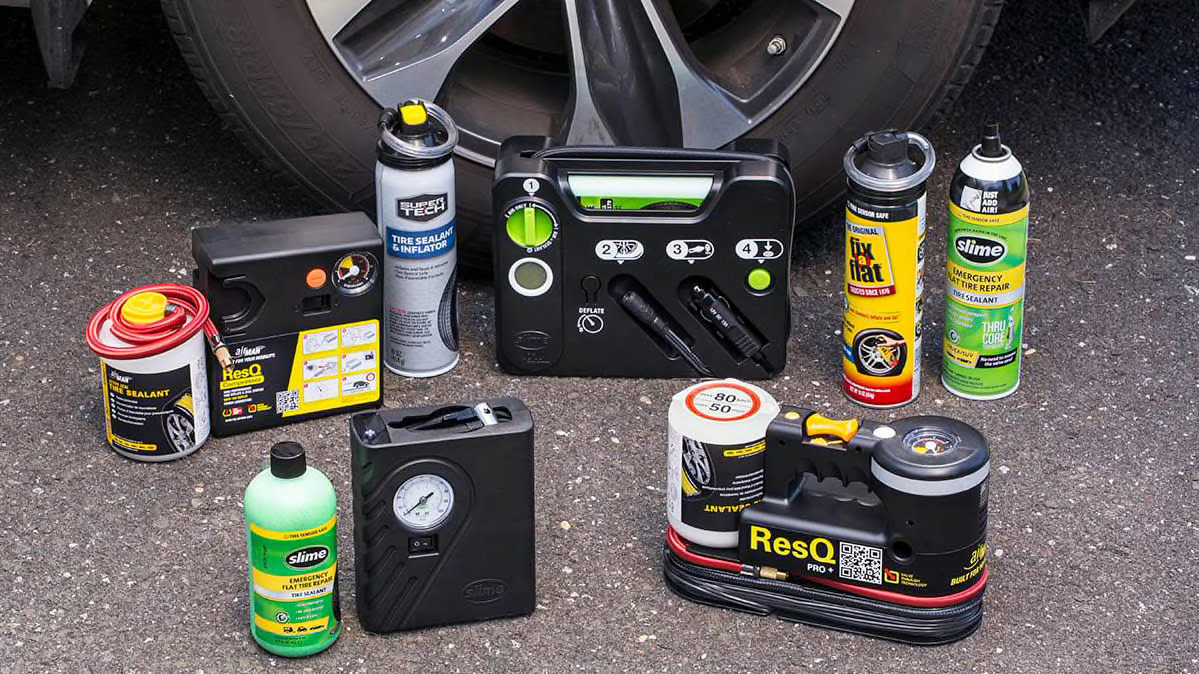Tire Sealant Review: Roadside Heroes and Those That Will Leave

To see how the latest products work, the Consumer Reports tire team evaluated seven common sealant models among three distinct types. Each is readily available in stores and online, and we bought multiple samples of each one for the project.
Pressurized-can sealants ($5 to $12), such as the ubiquitous Fix-a-Flat, are one-time-use products that have a dispensing tube that screws to a tire’s air-inflation valve. The sealers we bought claim to seal a hole and partially inflate the tire.
Tire-sealant kits ($38 to $89) combine a portable 12-volt air compressor and a replaceable container of sealant. Many new cars supply this kind of kit in lieu of a spare tire.
Liquid tire sealants ($12) is a liquid sealant poured through the valve stem of a tire/wheel, then inflated with a compressor that’s not included.
Key points:
No attempt should be made to repair a hole larger than 6 mm in diameter or a cut or hole in a sidewall with these products. Your only option is to replace the tire with that kind of damage.
If you use a tire sealant, you should get the tire professionally repaired or replaced as quickly as possible—typically within 100 miles or as directed by the product.
Sealants coat the inside of the tire and wheel with a messy residue, which a tire shop has to clean out, possibly causing extra expense. They can potentially gum up the tire-pressure monitor sensor (TPMS), if so equipped, risking erroneous readings. Most products specifically claim that they are TPMS safe.
Do be aware that some sealant products have expiration dates and will therefore need to be replaced periodically, even if not used.
